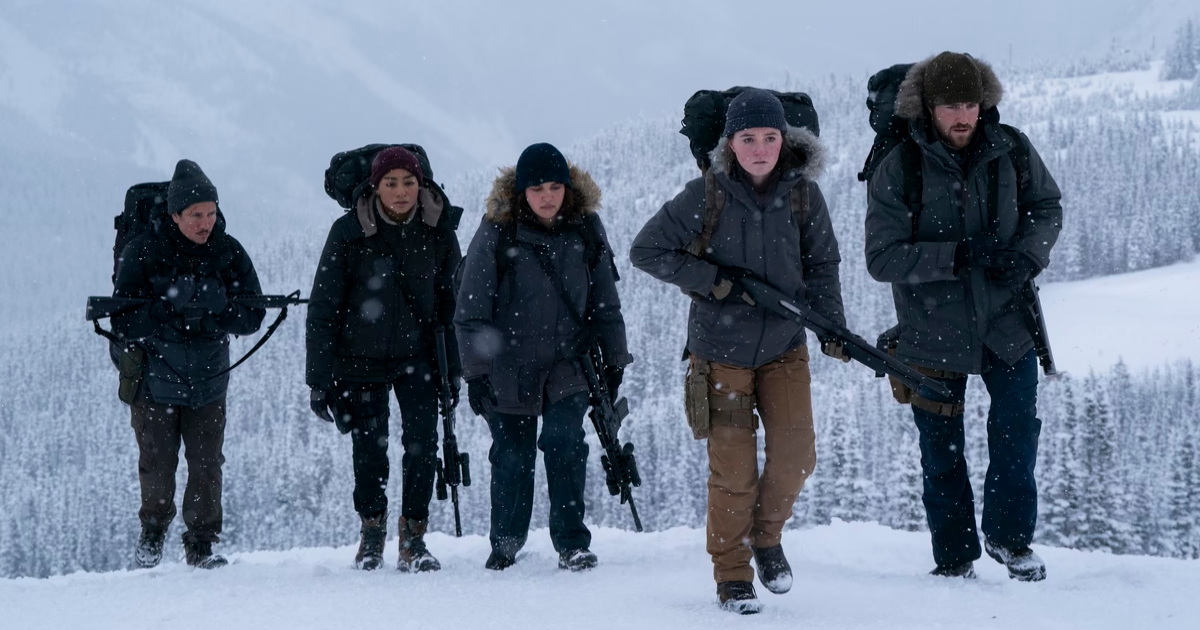The show went too far in the wrong direction with its most shocking moment.

HBO
April 20, 2025, 10:05 PM ET
This article contains spoilers through the second episode of The Last of Us Season 2.
Players of the game on which HBO’s postapocalyptic drama The Last of Us is based knew it was coming—“it” being the death of the show’s protagonist, Joel (played by Pedro Pascal). The Season 1 finale saw him slaughtering dozens of people in a Utah lab to save the teenage Ellie (Bella Ramsey); her immunity to the mutated fungus plaguing the country could have led to a cure if Joel hadn’t stopped the scientists from experimenting on her. In Sunday night’s episode, set five years later, Joel suffers the consequences of his actions: Abby (Kaitlyn Dever), the daughter of one of the doctors he killed, finds him, captures him, and then tortures him until he dies.
The scenes culminating in Joel’s death moved much more quickly in video-game form: Abby’s crew subdues Joel as soon as it learns his name. The next time he appears on-screen, the player sees him through Ellie’s eyes: She finds him on the ground, battered and unable to speak, and is forced to watch a stranger execute the man who has become her surrogate father. The sequence conveys Ellie’s disorientation and surprise; she has no idea who Abby is or why her group has attacked Joel.
The television series, however, indulges in the moment’s brutality. Abby delivers a long speech to Joel about why she’s going to kill him. His torture is extended and graphic; at one point, there’s a clear shot of a broken golf club piercing his skin. At the same time, a horde of “infected”—zombified people transformed by the fungus—suddenly descends on the nearby town: Jackson, Wyoming, the one place where Joel and Ellie felt safe. At its end, the episode cuts between shots of Ellie’s despair and the town’s destruction, her pain echoed by the townsfolk reeling from the invasion.
Read: The Last of Us and the power of video games
One of the best things about the TV adaptation has been its ability to expand past the limits of the game’s storytelling. From the jump, the show was willing to reinvent side characters and subplots, while infusing the themes of the video game’s first installment—survival and unconditional love—into its smallest creations. These flourishes helped the drama overcome the trouble of translating a video game to a different medium, reproducing the emotional experience players had when controlling the characters’ every move themselves. Joel and Ellie’s world came alive in these new scenes, and felt rich and distinct from those of other postapocalyptic projects.
Where Season 1’s plot detours fit comfortably within its overarching storyline, however, Season 2’s have thus far been awkwardly inserted. Take the extended sequence depicting Joel’s death: It requires Abby to explain her motive, which isn’t revealed until much later in the sequel game; the season draws upon only the first half of The Last of Us Part II, the game’s second installment. Instead of the jolt of watching a character we barely know murder, without explanation, a character we love, we more predictably see the show’s primary antagonist do what she said she’d do. To make up for the diminished shock, the adaptation packs in more deaths during the assault on Jackson. As terrifically acted and made as The Last of Us remains, the show has become a punishing watch, without the first season’s elegant insights.
In some ways, the unrelenting cheerlessness makes sense. Season 1 was about how bonds are built in impossible circumstances, and every plot tweak underscored that idea. Different kinds of relationships were scrutinized: romantic, platonic, familial. The second season, though, is about how bonds can fracture. The game explores the notion that violence is unavoidable, cyclical, and generational, before forcing the player to sympathize with Abby and question whether anyone is fully a hero or a villain. But instead of a careful observation of animosity, what the show presents are examples of undiluted pain.
Read: What’s missing from the grand finale of The Last of Us
Subsequent episodes do include glimmers of ingenuity that reach the moving heights of Season 1, most notably in an hour exploring Ellie and Joel’s relationship before his death, as well as in Ellie’s scenes with her love interest, Dina (Isabela Merced). But the show’s limited imagination becomes more glaring the longer it goes on. Later in the season, Ellie and Dina head to Seattle, where Abby ostensibly is, but they get caught in the middle of an extremely violent turf war between factions of people they know nothing about, leaving the conflict opaque. These asides prevent The Last of Us from delving into Ellie’s larger emotional journey of having to rediscover her humanity while she’s overwhelmed by her grief. Instead, the show posits that all of the characters have gotten lost in the darkness. As Dina puts it in a forthcoming episode, “Everyone’s past is fucked.”
Must the present be, too? The show previously argued that the answer is no, that some people look for the light, that there can be selflessness in even the most selfish acts carried out at the end of the world. Now, though, The Last of Us is as blinded as Ellie is by misery. Joel has died, and the audience must sit with the effects of his death. But Season 2, by leaning so far into its characters’ anguish, has become more circular and suffocating in its storytelling. It’s a kind of discomfort that no amount of world-building may be able to ease.
